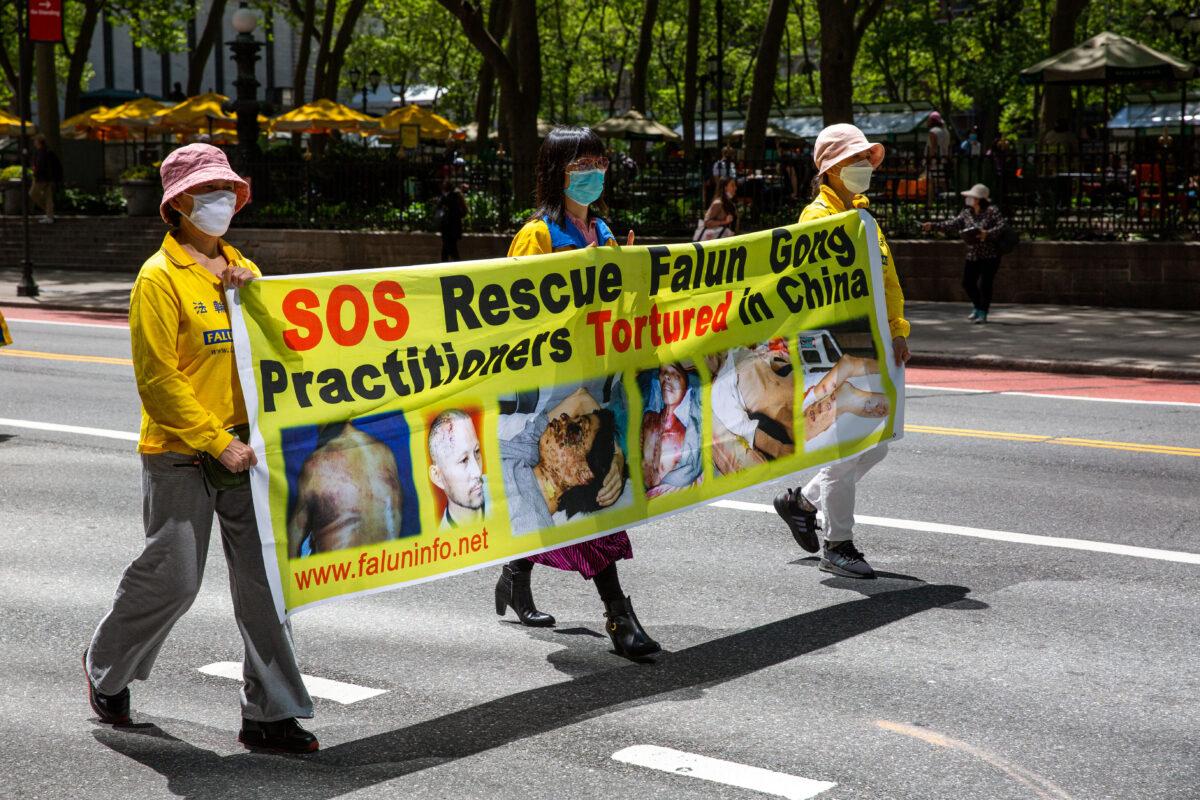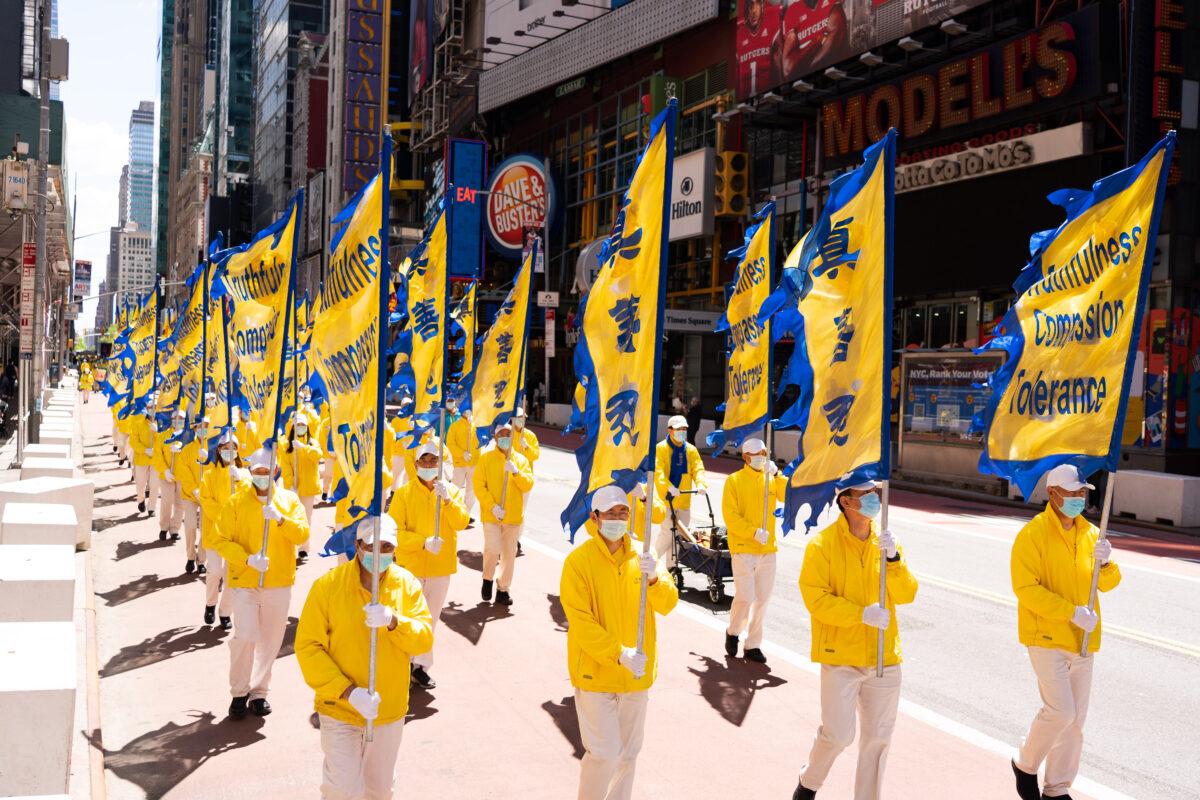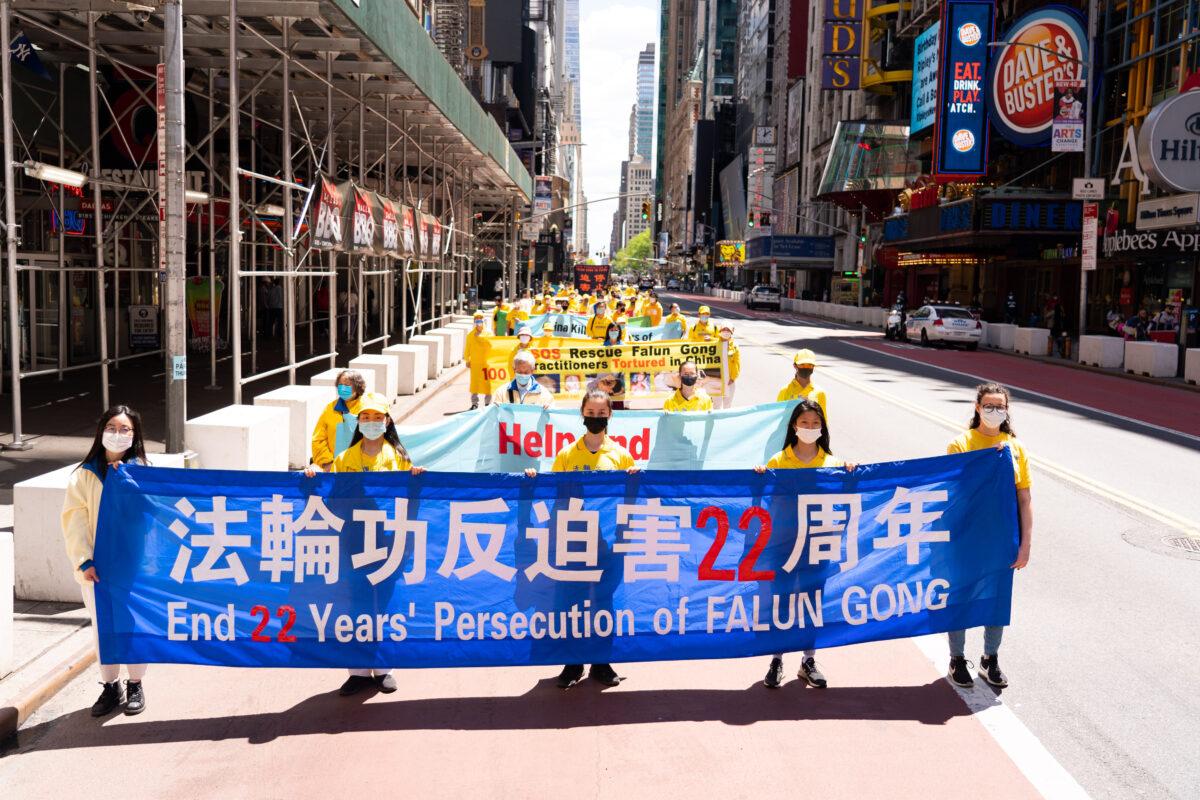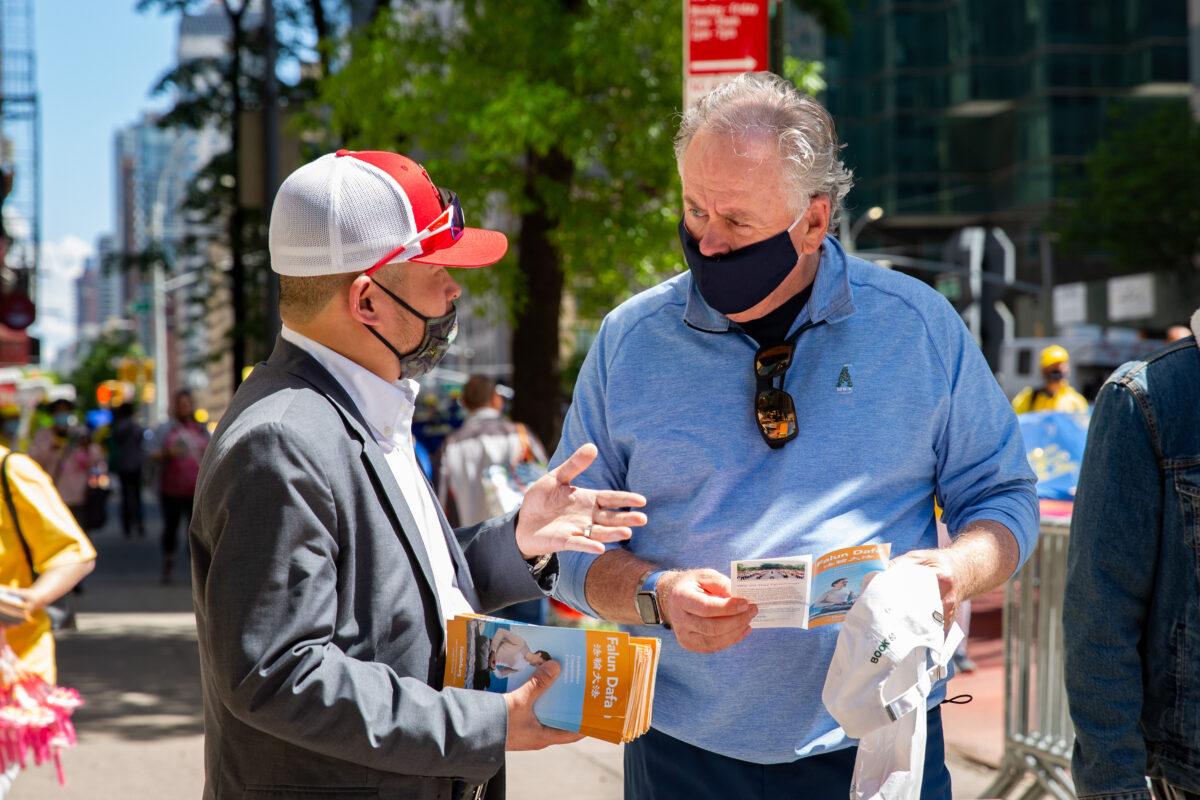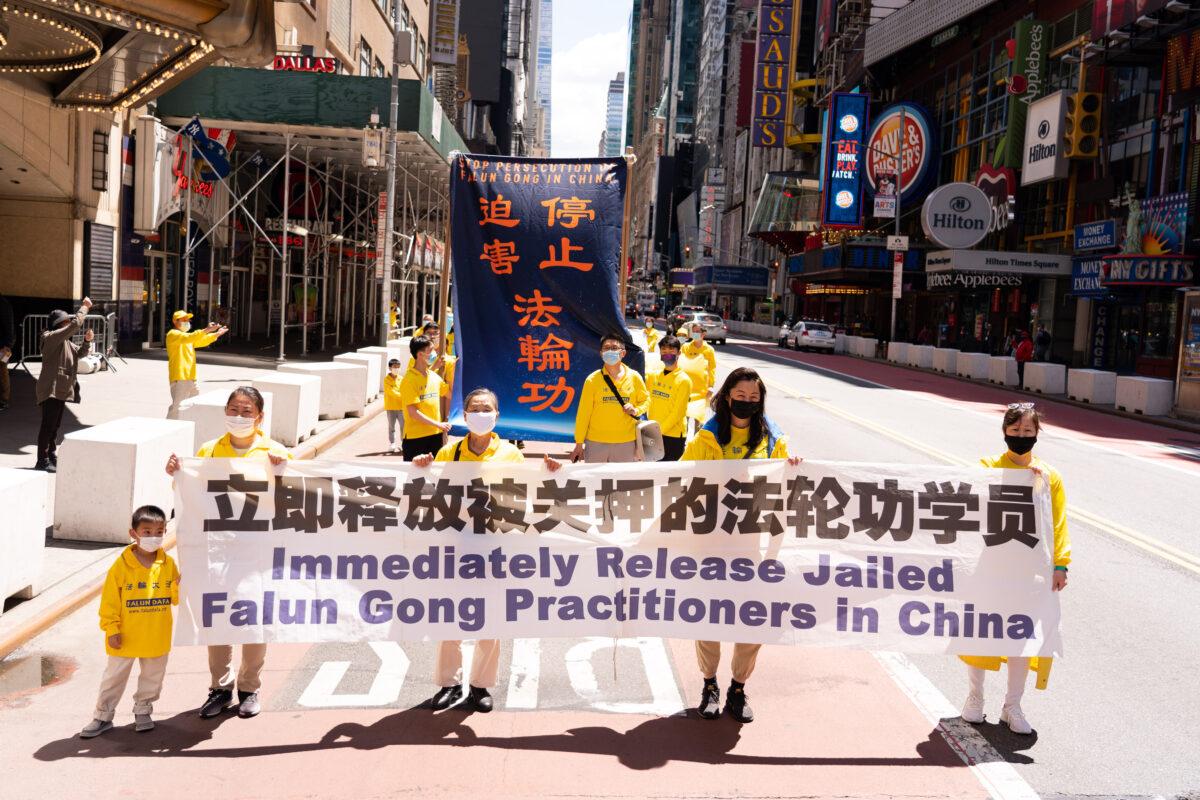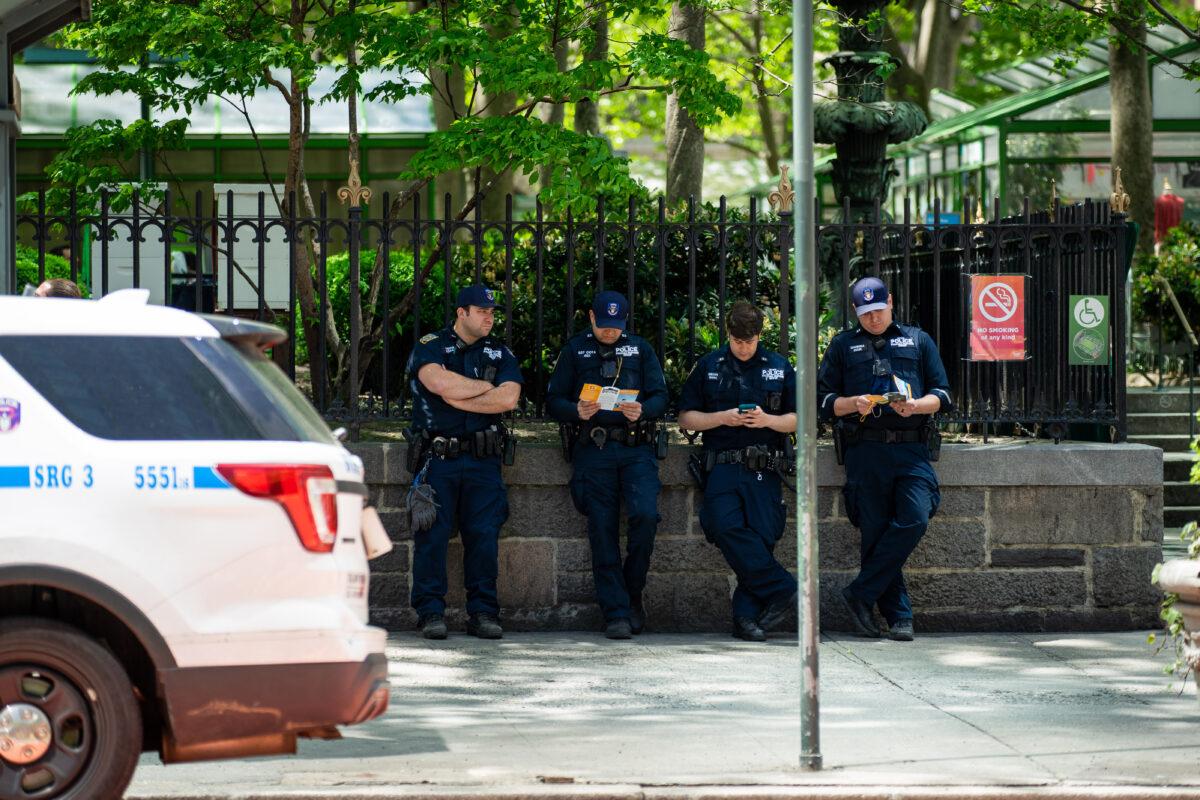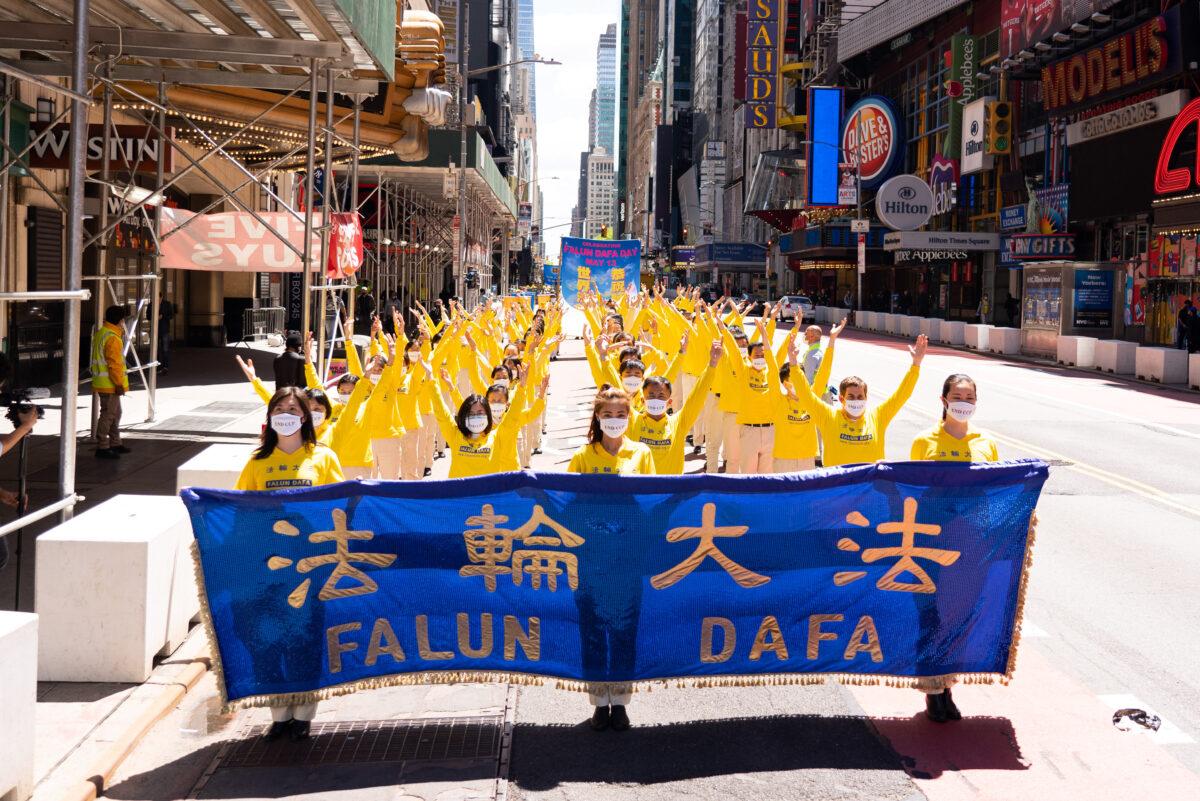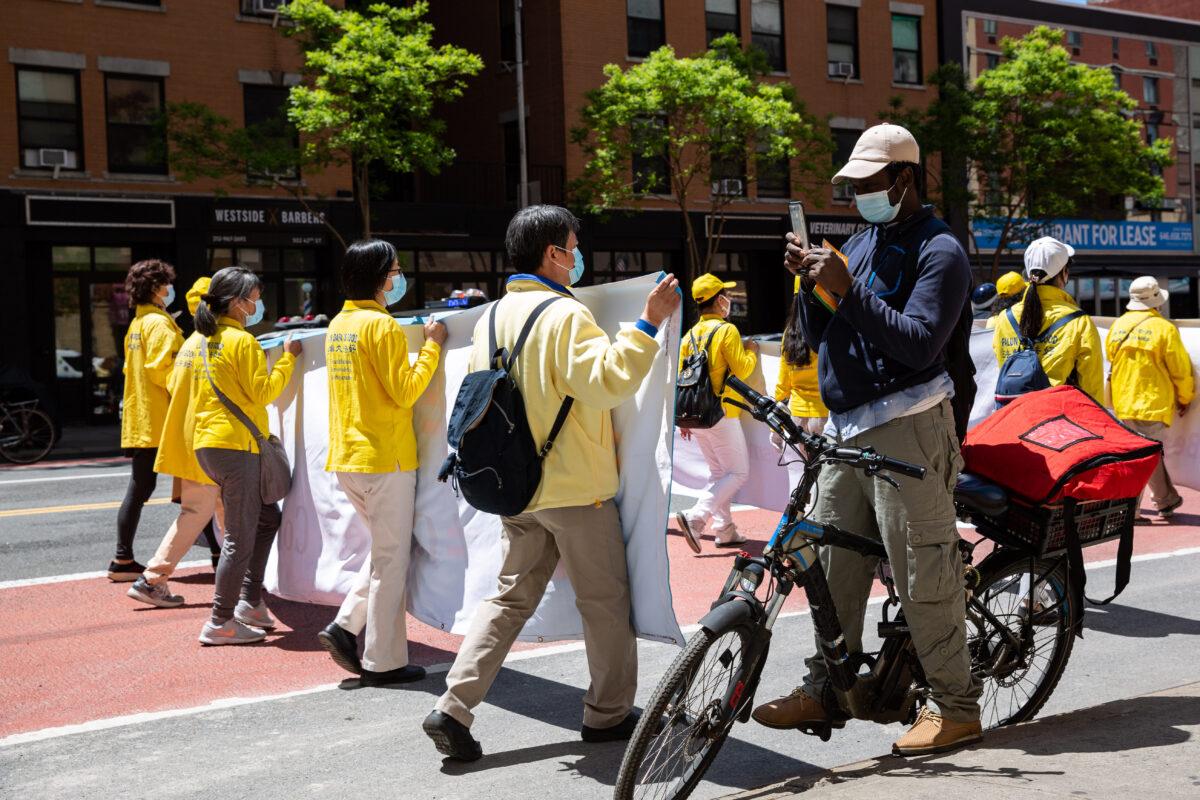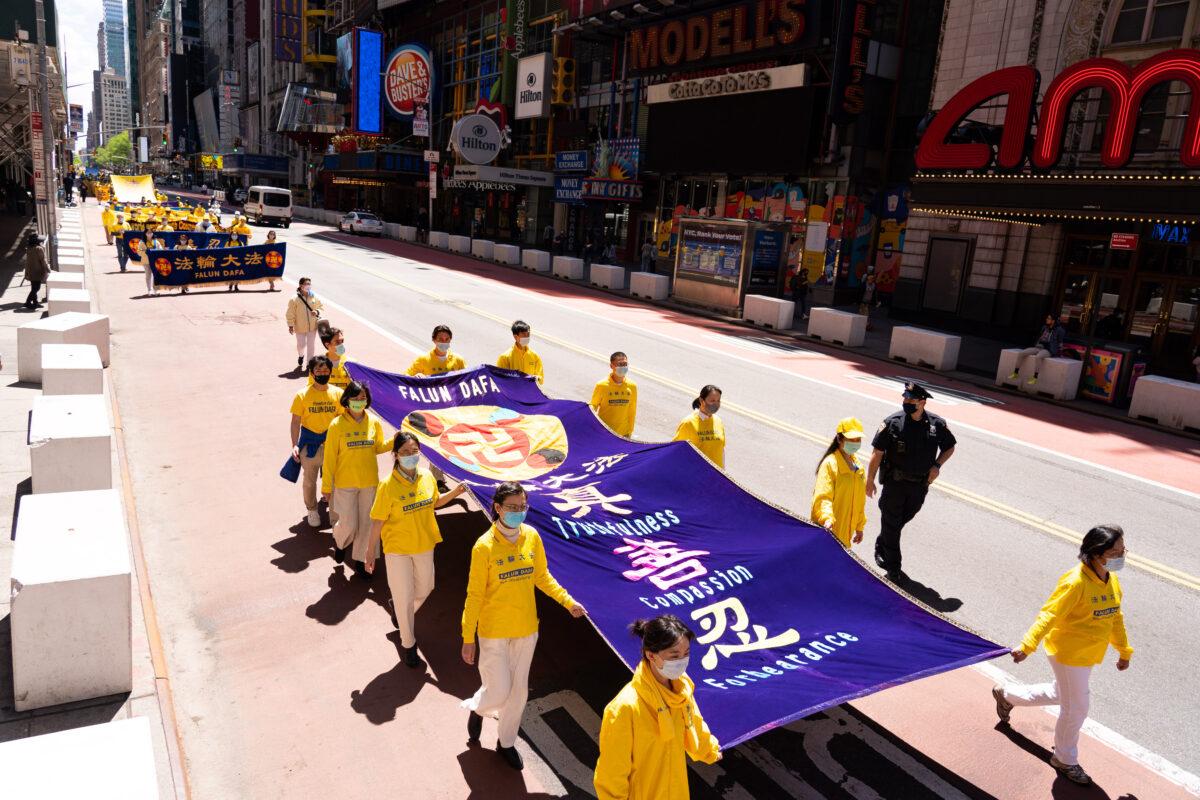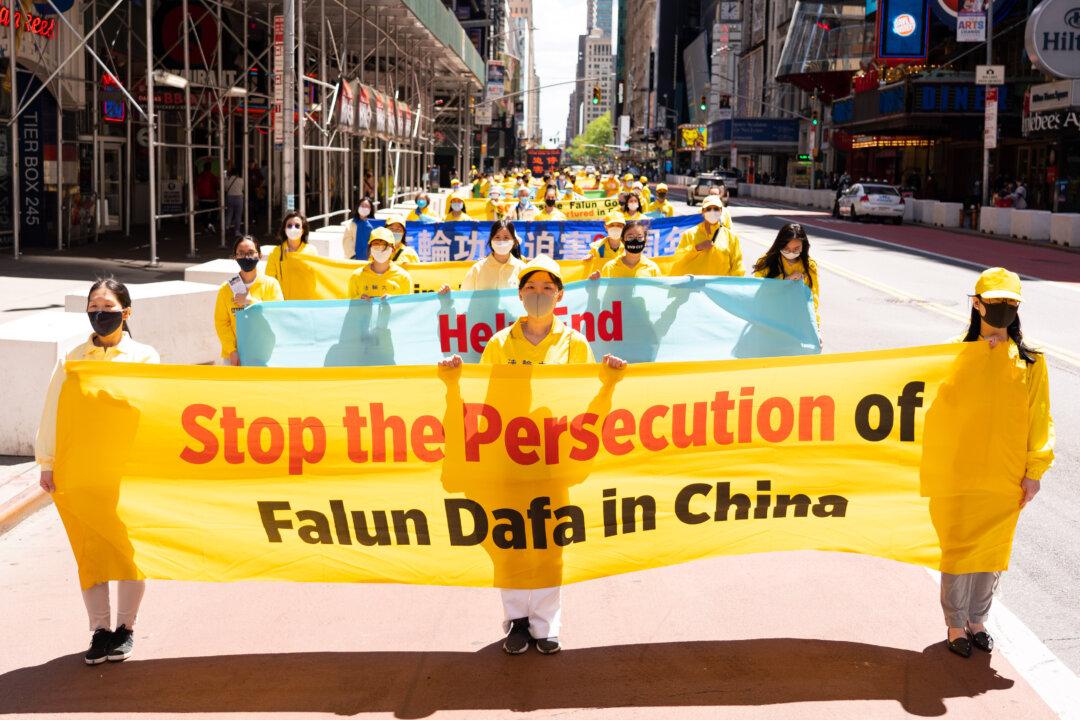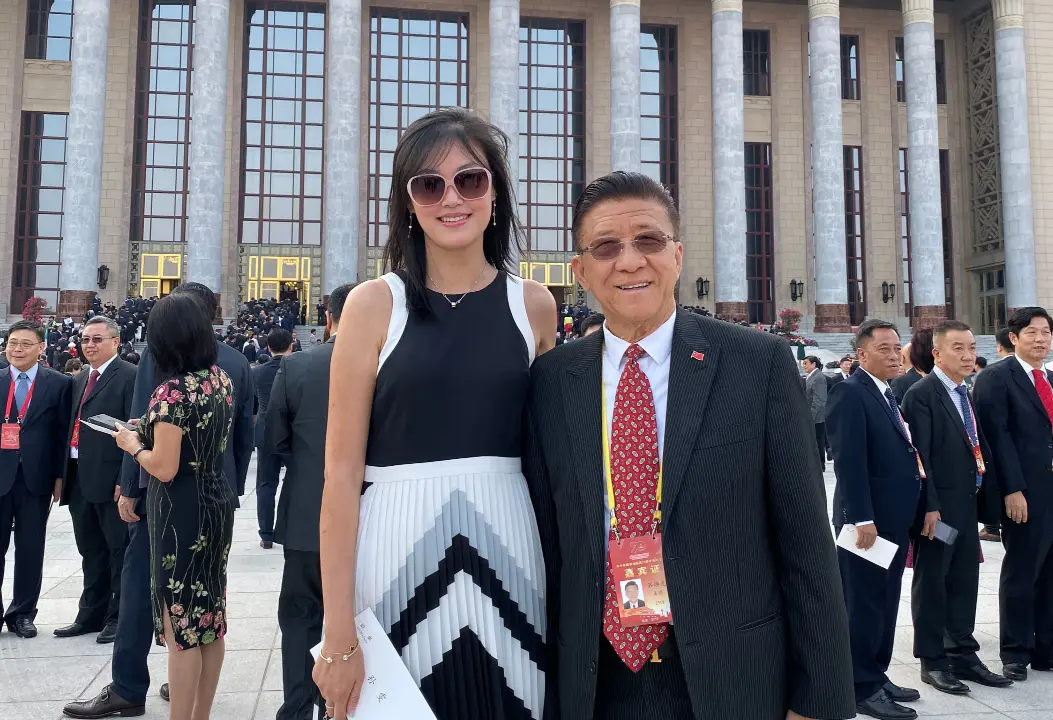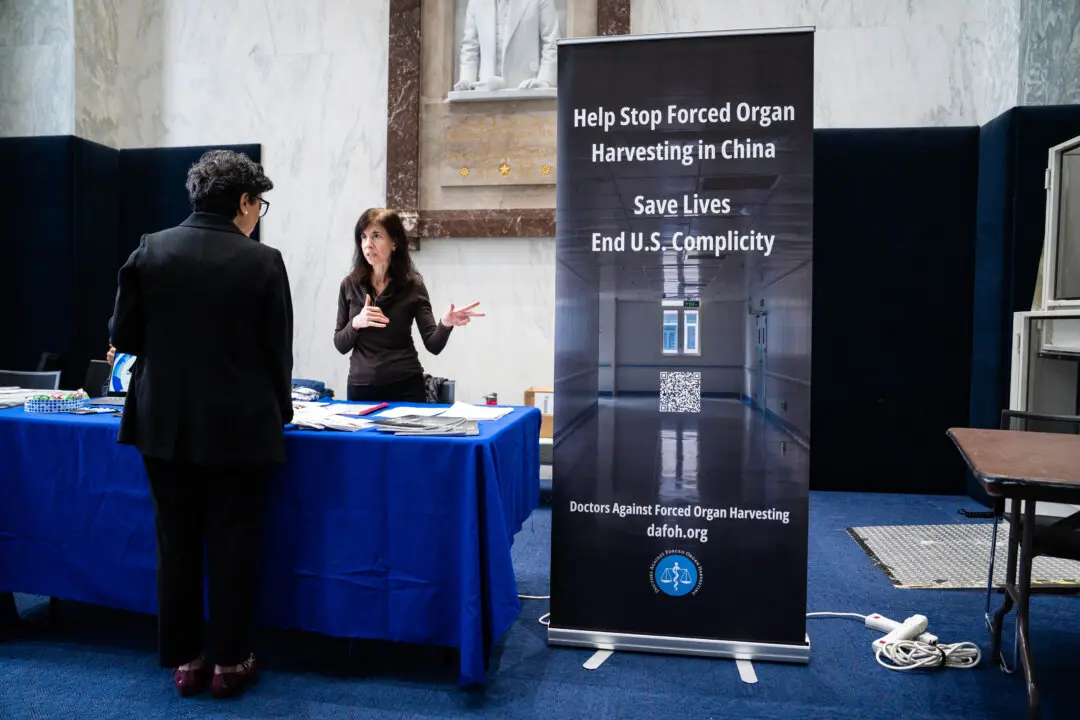NEW YORK—Nothing catches the eye quite like the sunny, golden hues that brighten up the Big Apple.
“It’s like a golden dragon winding right through the heart of New York,” said Michael Fitzgerald, a Falun Gong adherent who sat watching as the parade proceeded from Katharine Hepburn Garden.
To the participants, a sizable number of them survivors of a bloody suppression under communist China, the gathering was an opportunity to celebrate decades of perseverance and to call for greater awareness from the international society. Standing up for the beliefs that have sustained them, they said, is crucial not just for their faith alone, but for humanity as a whole.
“Defending morality and humanity, only then will people have hope ... and will our society stabilize,” said Li Meifang, a practitioner originally from mainland China. Li’s name means fragrance of plum blossom, a flower traditionally associated with resilience in the face of adversity in Chinese culture.
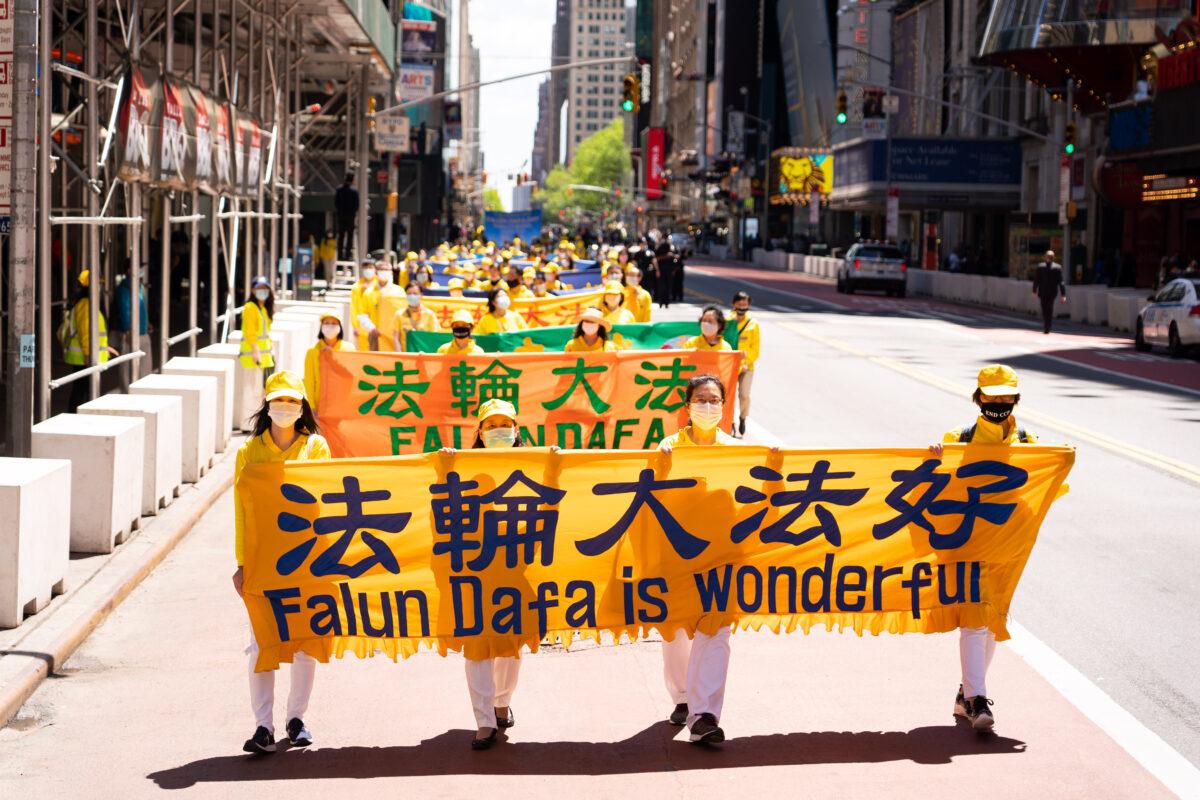
Falun Gong, a meditation discipline first introduced in northern China in 1992, features teachings based on three core principles—truthfulness, compassion, and tolerance—along with a set of slow-moving exercises meant to uplift both mental and physical health.
Around 70 million to 100 million people had taken up the practice by 1999, when the atheist Chinese regime saw such immense popularity as a threat to its rule. Beginning in July that year, millions of practitioners were thrown into jail or other detention facilities, where they suffered torture and slave labor for persisting in their faith. Untold numbers have been subjected to state-run organ harvesting.
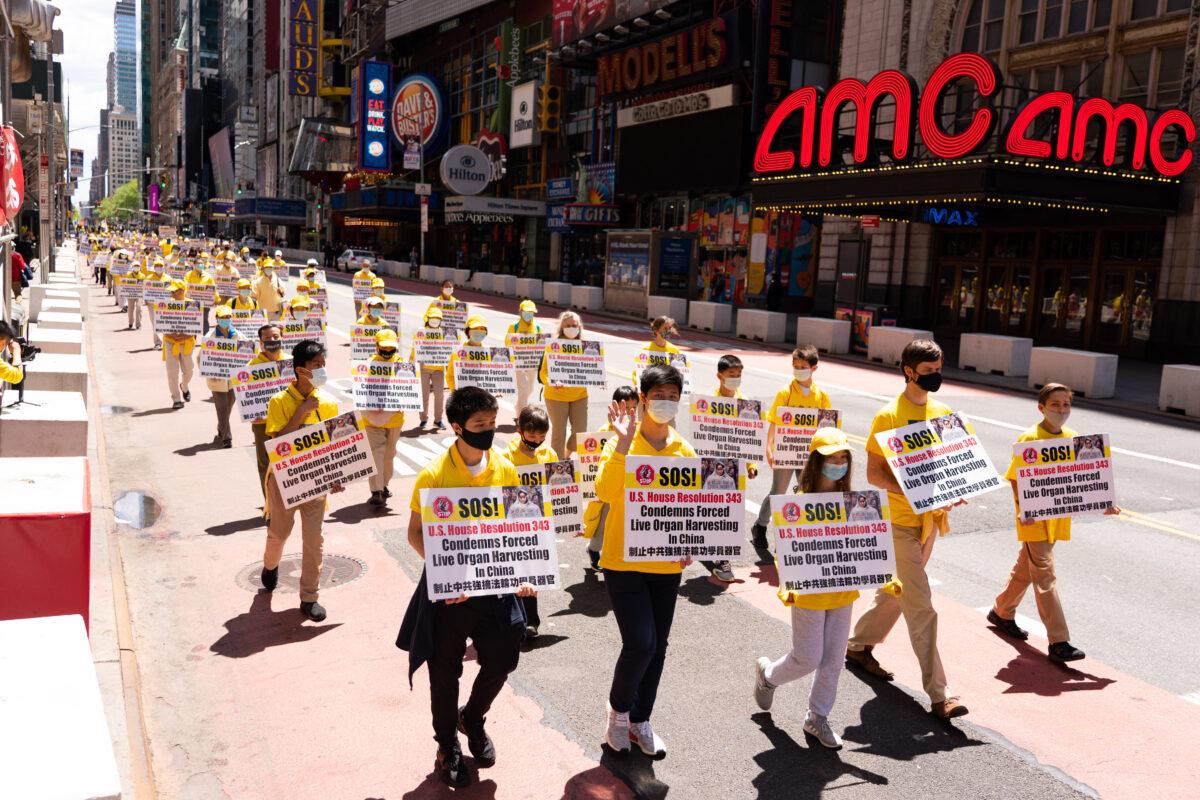
‘They’ve Used It All’
“They wanted us to ‘transform.’ Transform to what?” Li said, referring to one regime tactic called “transformation through education,” in which detainees are tortured and forced to watch propaganda videos. The detainees are then forced to write so-called “repentance statements” promising never to practice Falun Gong again.“If we turn back against truthfulness, compassion, and tolerance, turn back against humanity, turn back against what’s upright, then we would be turning wicked. This is completely unacceptable.”
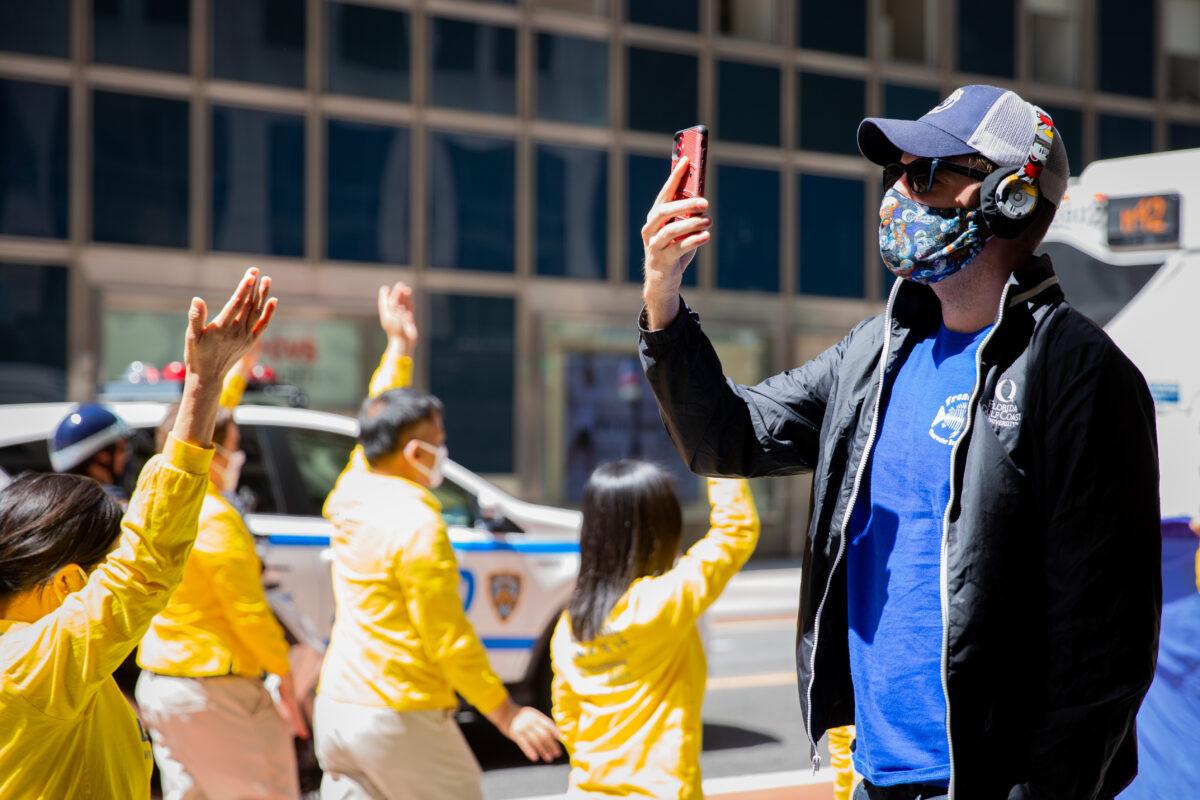
Tears wet her cheeks as she began to recall the grueling years spent under persecution.
“Toxic drugs, jails, handcuffs, shackles, they’ve used it all,” she said.
Now 71 years old, Li spent the better part of 15 years in China in detention or in hiding, until she fled to New York in 2014. She experienced at least a dozen arrests.
In one labor camp, the guards force-fed her two pots of an unknown liquid that made her lose awareness of everything.
“When I saw people, I only knew to wear a silly smile,” she said. She once memorized the preface of “Zhuan Falun,” the main teaching of the practice. But after the drug, the most she could recall was the first two sentences, she said.
“My house was raided so bare that only a few benches were left.”
To dodge incessant police threats, Li later left her hometown of Chenzhou in Hunan Province. The communist authorities, in an effort to track her down, locked up her son and daughter, who were then in primary school and high school, respectively. The children were kept in the detention center for a day, without food or water, as authorities pressed them for her whereabouts. They were released at 2 a.m.
Once while walking on the street, Li’s daughter was stabbed repeatedly by someone Li believed to be a communist agent. The doctor counted at least 13 wounds. One of them, between her thumb and forefinger, was cut so deep, the bone stuck out.
Yet despite all the dark memories, Li and her children persisted. At one point while Li was in custody, the guards brought her kids in front of her and told her they might be kicked out of school if she refused to “transform.”
Whatever threats the guards made, “fear not,” she remembered telling her children. “The dawn will eventually break after the darkness,” she told them, before the police pulled them apart.
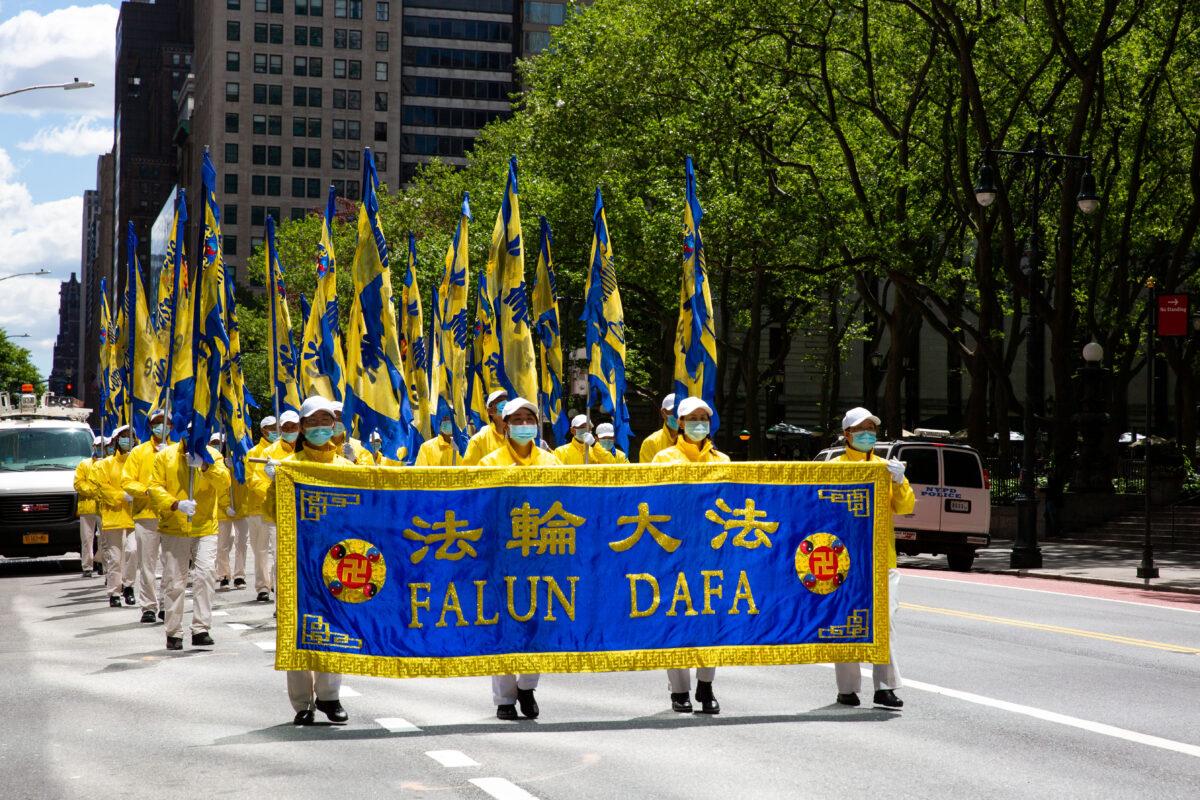
Colors of Hope
Even though some of the banners carried by participants displayed images of brutal torture, the parade’s bright yellow and blue colors projected a message of hope.Both yellow and blue appear prominently in Chinese traditional culture. In Fitzgerald’s eyes, golden yellow carries the meaning of springtime and rebirth. Blue reminds one of peace, as with tranquil water.
“For people who are very hopeless in the city, who feel like they don’t know what to do because of the pandemic ... this is a chance for many of them, what they’ve been waiting for—to know that they have hope,” Fitzgerald said.
Last August, Fitzgerald and his wife, Katie, moved to New York with their four kids, aged 2 to 8, upon Michael landing a job upstate. Katie is also an adherent of Falun Gong, and they had coordinated the outfits of the whole family in the two colors to mark the occasion.
Katie, who has been homeschooling the kids full time, credited the practice’s teachings with bringing harmony to her family and giving her the wisdom to resolve conflicts among the children.
She said that today, she seems a world apart from her younger self of 11 years ago, before she began to practice. What she has gained since then has not just been peace of mind, health, and wellness, she said.
“We are busy, but every single moment of the day is full of purpose,” she said. “We are just the richest, very lucky.” She laughed as she gently stroked the hair of the youngest girl, who was moving around on her lap.
Her husband interrupted her to point to four or five people in yellow or blue jackets who stayed behind after the parade, quietly sweeping trash into plastic bags in their hands.
“Isn’t that incredible? What other groups are doing that?” he said.

